Our first garden was a container garden on a balcony. We had no soil, so container gardening was the way to go for us. It is fun to grow a container garden on a balcony, patio, driveway or in a greenhouse. Containers allow us to grow food without owning a speck of land. Containers are also great for indoor gardening. You can grow your own salad greens year-round, or early carrots and even tomatoes.
Container gardening also presents some challenges. There are things that are true for any container garden, and there are things that are unique to grow bags. If you have the choice to grow in good soil, it is always better than any container. But if you need or want to grow in a container, a grow bag is a great option.
Why grow in grow bags
Grow bags are made of breathable fabric which means superior drainage and aeration. It is the aeration that makes them superior to other garden containers. If a container has no aeration and the roots reach the walls of the container, they give a signal to the plant to make more roots, resulting in a root-bound plant. Eventually, the plant just kills itself with a mass of roots going round and round in the container. Here is an end of season comparison picture. Both plants are done with growing, but one is completely dead.
Root bounding will not happen in a grow bag. Here if a root reaches the wall of the bag, it will be “burned” off, causing the plant to constantly produce new and healthy branching roots. This is also called air-pruning. This picture shows nicely how the roots did reach the wall of the bag, but did not go round at all.
Soil for grow bags
Soil is the heart of any container gardening. In the grow bags we use Mel’s Mix from the All New Square Foot Gardening book. It is a great mixture for any gardening, also container gardening. The mix is 1/3 moss, 1/3 compost mixture (for example chicken manure, horse manure, and mushroom composts), and 1/3 vermiculite. This mix preserves moisture which is very important for grow bag gardening. Read more about soil for container gardening here.
We also mulch our grow bags with wood chips just like the garden. It helps to keep the soil moist on top, and we find that plants just grow better with mulch even in containers.
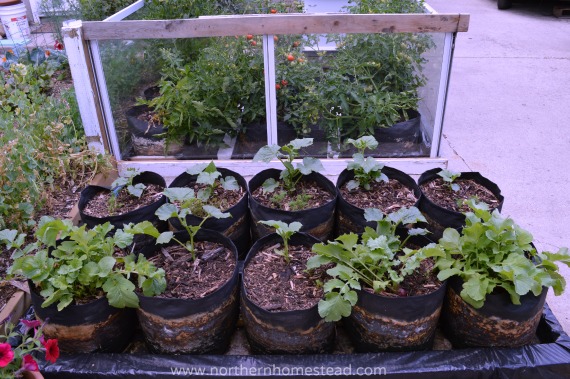
You can reuse this soil mixture year after year. Remove the wood chips mulch, empty all the bags, add about 10-20% new compost, and mixing it well up again.
Watering grow bags
Watering is always a challenge in container gardening. Too much makes the plants sit in water, too little makes them dry out. It also depends on what the container is made of. Grow bags do dry out much faster than pots. The drainage and aeration of the grow bag, leads to more frequent watering needs. Also, it is difficult to really soak a grow bag, the water will come right out. Two things can be helpful.
Drip system
Install a drip system, so the grow bags get a constant moisture supply. We tried the bottle drip system. It did not do so well for us, even though many have great success with it. A pipe drip system would work well, too.
Self watering system
Have a container underneath the grow bag that you can fill with water so it can be wicked up. Any container would work, we got the idea from the Kiddie pool grow system. But if the container is too deep, you will need an overflow. You want most of the roots to be in air.
Here a build box out of styrofoam, it is not very deep, so an overflow is not needed. It looks like a raised bed. In this we planted cucumbers. Cucumber like water a lot.
Same idea, but boxes build out of wood and covered with plastic.
Fertilizing grow bags
Since containers do not contain much soil, heavy feeder plants need to be fertilized. Personally we prefer natural fertilizers. Bone Meal, worm casting and compost tea are all great natural fertilizers. Also, Epsom Salt and eggshells can help to add minerals.
Hope we could encourage you to grow a container garden using grow bags.
Read also how to sew a grow bag, or order your Grow Bags ready-made for you.
We invite you to subscribe to Northern Homestead and follow us on Instagram, Facebook or Pinterest for the latest updates.

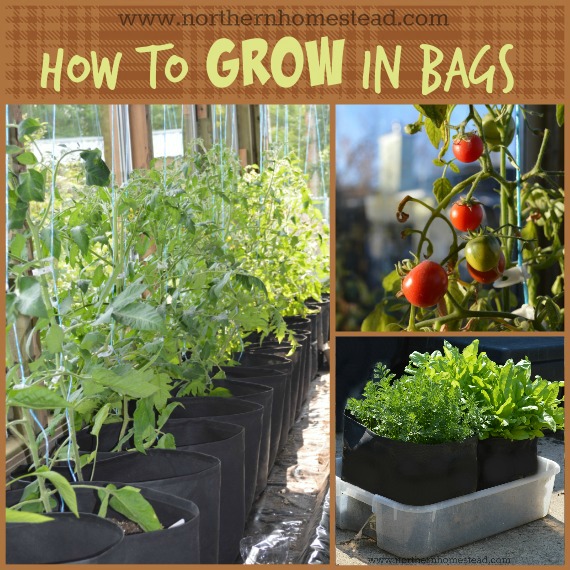
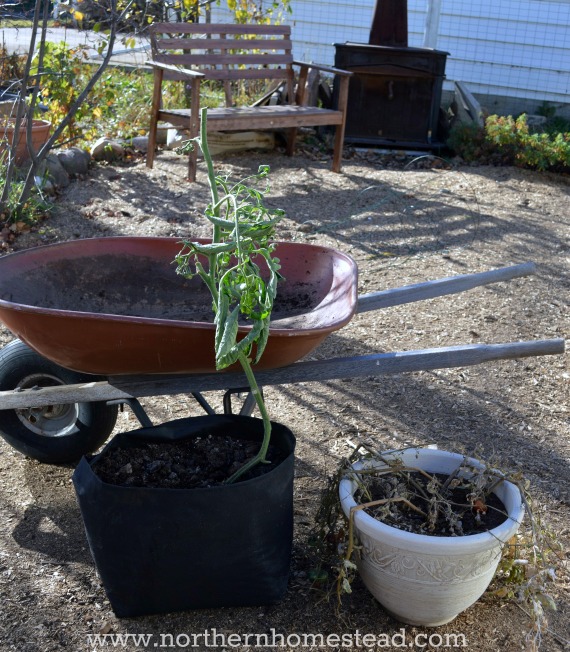
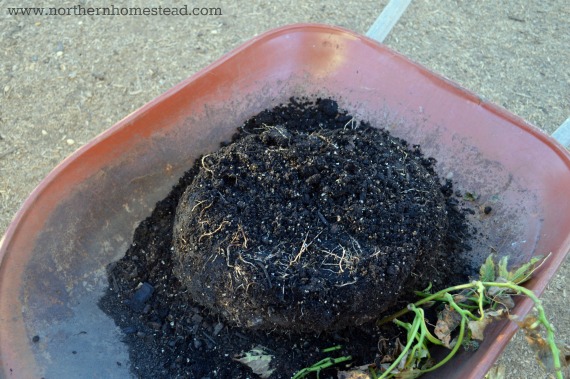
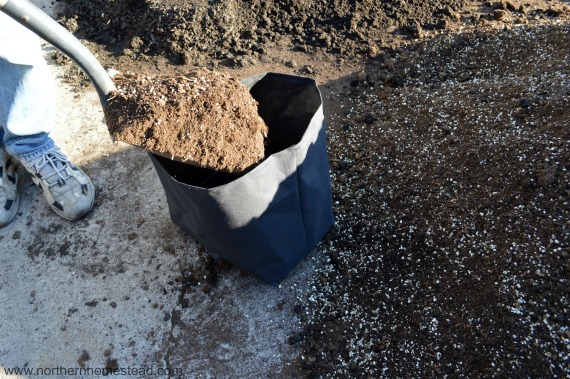
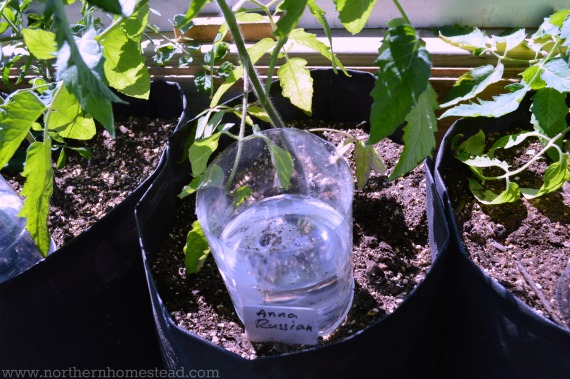
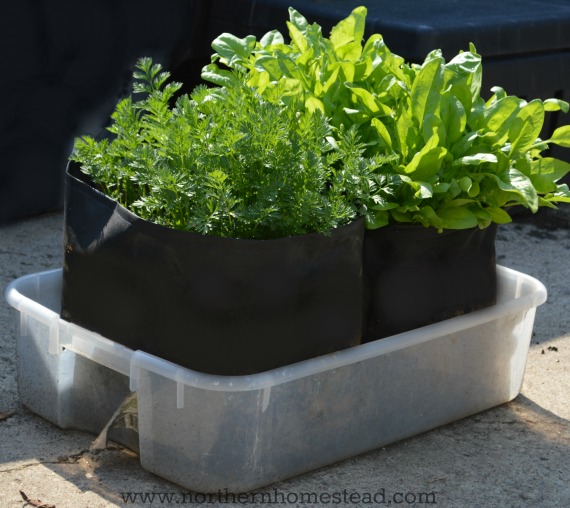
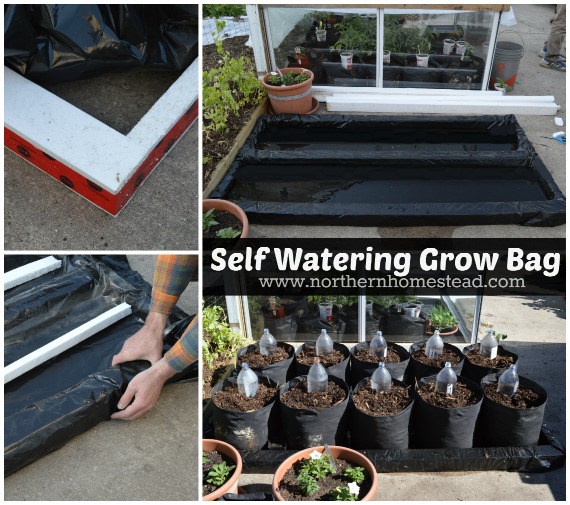
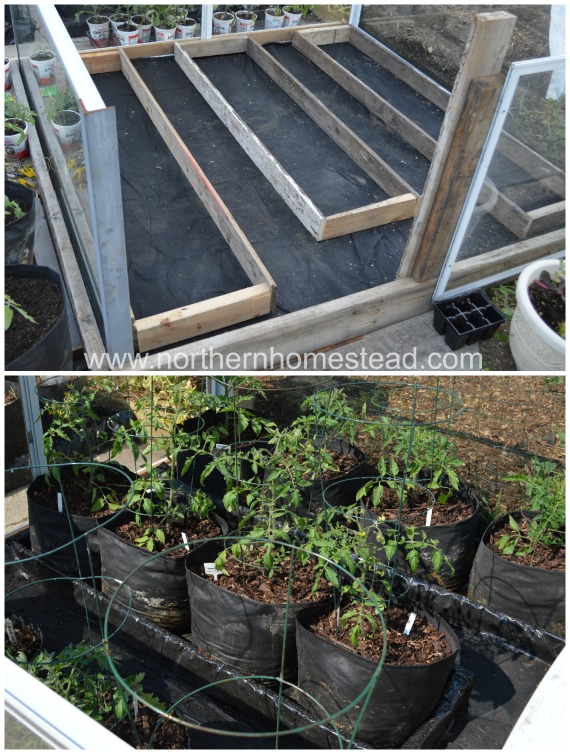
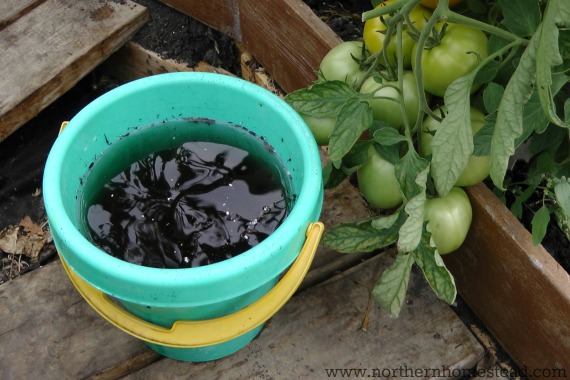

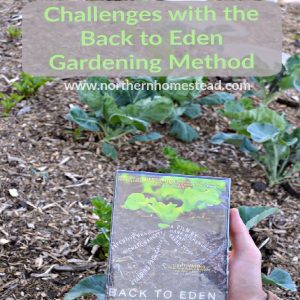
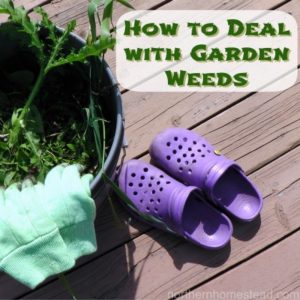
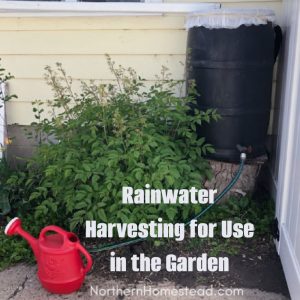
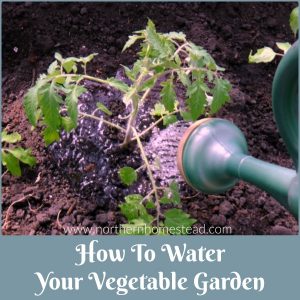
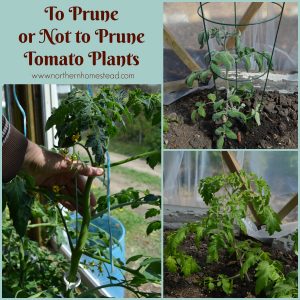
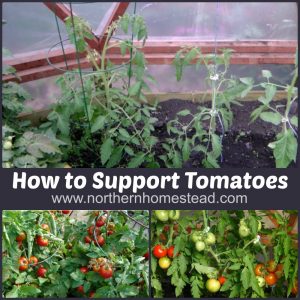
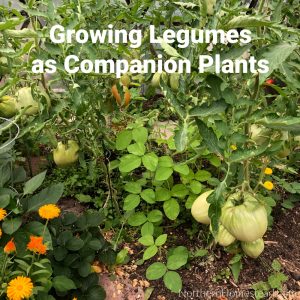
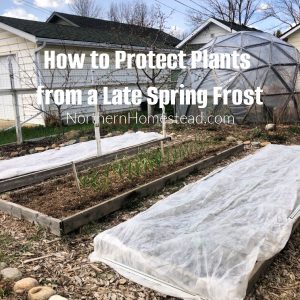
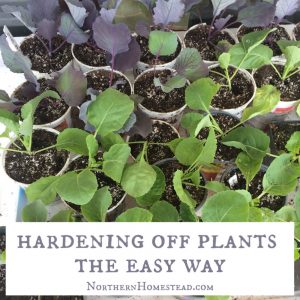
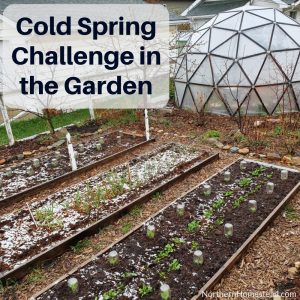

Anna, this is all such great information. I would love to have such a great garden with healthy plants. I was not aware that root bounding would not happen in a grow bag. That is good to know.
You are welcome Shirley. I am sure your flower garden does look great. Keep on growing!
These are so cool! They would really cut down on storage space for my pots I grow in. I’ve never seen things like this. Very good idea.
Try it Amanda, and let me know how you like it. Did you see my post on how to sew the grow bags?
I’m still very intrigued by these “grow bags”. How long do they last?
It depends what you make them out. Our fabric has at least 20 years guarantee, however, the bags will not last that long, since there is a bigger wear and tear.
I’ve done mostly container gardening and I never have good success with tomatoes. This year I’m planting them in the soil. I didn’t know that plants would not get root bound in the growing containers. Good to know.
I grow tomatoes and peppers in grow bags (7 & 20 gal.). Most of my tomatoes get 10′ high, many will go to the top of my trellis, then turn around and start growing back down. I have one small raised bed 4×8′, everything else is grown in grow bags and other large containers. I live in Zone 6. I also will be growing small watermelons in grow bags 20 gal.), and training them up a cattle panel hoop trellis. Good luck in 2020 … take care.
Awesome, thank you for sharing. It sure is possible to grow almost anything in a grow bag.
Great tutorial. Thanks for all the great information. I can’t wait to try grow bags this year.
~Lisa
What do you use to prevent mosquitoes or rotten water caused when the fertilizer drains thru the potting soil. Also do you allow the water to completely evaporate before refilling? Thanks. giving it a try, but unsure about leaving standing water around during the summer.
Yes, we do let it dry between watering, this way we prevent mosquitoes or rotten water.
What is the best way to clean these bags in between uses
I do not know, truth is we don’t clean them, just reuse as is. I have thought about cleaning them, but the minerals that accumulate on them are just so firm, so I left them as is. If you find a good way, please come and share with us.
I think that hydroponic system cleansers will be ok to remove mineral salts buildups, who can affect the ph of the medium hence disturbing the nutrients uptake. Just soak bags in solution overnight and then rince.
Happy Gardening
Great tip, thank you for sharing.
Wash immediately after use. Then allow it to dry in the sun properly. However, if you are using the same soil type for growing, I don’t see the need to wash it except for the presence of unwanted organisms in the soil.
So you’re saying if you get good results from the plant in a bag at the end of the growing season just remove the roots of the plant & leave dirt in bags for next spring?
We do remix the soil with some fresh compost, fill the bags again and reuse them.
I received a felt grow bag as a gift and want to give it a try. I’m in Napa, Ca and can grow just about anything in our climate. I primarily grow vegetables. Do you have any recommendations on veggies that particularly like grow bags? My searches tend to bring up info on planting in soil bags! Thanks for the info!!
We grow mostly tomatoes in grow bags (determinate varieties), and they do very well. Since you are in a hot climate, you have to make sure you plant something that can handle the heat, since in a container (even in a grow bag) it will get even warmer.
From your experience, What size should I use for tomato plants? Say beef tomatoes or big boy.
We grew tomatoes in one squire foot bags and it worked great. However you will have to fertilize the plants.
I just bought some of these bags. What vegetables do you think will work in the 5 gallon bags? Thank you.
Almost anything would work in this size bag. Experiment as you go, take notes and grow more.
How do you store the soil for the winter so that it doesn’t mold?
We just make a pile outside and let it sit till spring. In spring we ad compost, mix well and reuse.
how long can you allow plants (ornamentals) to stay in the grow bag?? (Notes above indicated long life– am assuming that is with use.) I used burlap ,– the material disintegrated after the first season. I had them inside the regular decorative clay pots.
Hi Cheryl, first to have a grow bag inside a regular pot misses the purpose of a grow bag. Not sure if that is the reason it did not last. We used our hand made for several years, some are still good. Still, there is no way for us to tell how long a bag will last for you, sorry. Hope you find a better solution for your plant.
Is the soil ratio by weight or volume?
It is by volume. Note also that peat moss will expend greatly once it is opened. If you can get the book, your library might have it, it explains it very well.
Hi! is it necessary to clean off moss etc. off grow bags…I did use a brush & the hose to get the worst off but I do not want to damage the bags either..Last season was my 1st time using them,..used them for carrots,radishes,onions & 1st time growing potatoes..I just got larger ones for the potatoes for this season …Thanks Dan
Like you say, intense cleaning can damage the bags. Plus they will look just the same next season, so we don’t bother.
I live on the 3rd floor with a balcony and want to still garden. I want to avoid water dripping to lower balconies when I water my plants and don’t want them sitting in water obviously. How would I use the grow bag with the self-watering trays? How successful is that method?
The watering trays help to keep the water in when you water the bags. However, if it rains too much there is a danger of overflow. Maybe it would not matter so much since everything would be wet anyway.
Just set the bags in a tray filled with gravel; keep the bags on the gravel and they should stay out of the water.
Thank you so much for sharing. I am going to order these grow bags to try for my indoor house plants. Is there a readily available soil mix that you recommend that I could get easily? The one you described wouldn’t be easy for an inner city dweller like me to get my hands on. 🙂 Thanks!!!
Any good potting soil should work for houseplants. Just ask at your local garden centre.
Hi there
I’m in central California right on the coast
Near Santa Cruz Zone 13
I’m trying to grow tomatoes thru the mild winter we have
I’m incorporating 1 mil plastic bags with holes over the hole plant
Also black plastic on the ground to keep it warm
I stray every two weeks using serenade for molds ect
What else could I being doing to ensure a healthy crop
Please rsp and. Thx. Ed from capitola
Hi Ed, we do have tons of information on growing tomatoes in a cold climate (what your winter might be like). Just go to growing, down to the list of growing tomatoes and read, read, read. The most important thing for you though might be the tomato variety. Grow one that sets fruit in cold climate. Again, there is information on varieties on the blog too. Happy tomato growing!
I’m new to grow bags and to gardening in general. Could you suggest perhaps how often to fertilize the heavy feeder plants? I’m hoping to use Epsom salts and Bone meal. Is there a way to know about how much to add when it does come time to fertilize? I’ll be using 7 gallon grow bags. 🙂
Thanks so much for the help, I’m very excited about this new endeavor.
Welcome, Amanda to the gardening world. Your fertilizer package will tell you how much to use, it is a good start. However, I find that doses are often very high, your plants might not need as much. As a new gardener concentrate on getting to know your plants so that after a while you can see if the plant is happy or not. Gardening is quite natural and intuitive if you tune in.
This is my second year with the grow bags. Last year was an alright year. A few mistakes with small amount of produce.
What can I plant in the bags? Last year I did tomatoes and peppers.
Almost anything can be planted in grow bags. I have even grown carrots, and it worked too.
Wow, so many questions answered. Thank you so much. My backyard will have major works done, so I wasn’t gonna do beds. So bought myself some grow bags. I have one round bag that’s 36″ by 10″. Can I grow salads in that, or it’s too shallow? Thank you!!
It would work for salad, but you might have to water more often. Happy growing!
Interesting self-watering ideas. The rapid drying is my chief concern as I try grow bags for the first time this year.
Awesome post!
I was wondering if you had any tips for grow bags staining concrete? We are going to be placing our grow bags on concrete and would like to avoid the brown stains that we get from traditional pots.
Do we need to use a saucer + raise the pot above the saucer so that it doesn’t sit in the accumulated water? Or can the grow pot just sit on the concrete and it will not stain it?
A saucer is very helpful when growing in grow bags. To be sure there are no stains, lifting the saucer and bag would probably be your best choice.
What kind of plastic did you use for building the self watering tray? Would a tarp be ok to use as a liner or does it need to be some sort of pond liner?
I think we used construction plastic. If your tarp is watertight, it would work too. A pond liner would work too but is a bit of a waste since there is not much water to hold.
Great guide, this makes me want to start growing in bags too! I remember one of my first jobs we planted big trees for houses in the city and they even used bags for 12-foot trees! Definitely a smart strategy. Are these bags completely biodegradable?
Most bags are not biodegradable, otherwise, they would not hold. However, you can look for bags made out of natural material vs plastic.
I will be trying to grow all my vegetables in containers for the first time this year. I was fortunate to find a fabric pot company with a sale on their own models and so got everything from 10 gallon to 15, 30 and 40 gallon pots. My question is about watering. I thought of three ways. 1) submerse the bottom few inches in water especially for cucumbers etc., 2) buy and use olas that can be buried fr slow release to the root zone and 3) use deep drip clay watering stakes either 8″ or 14″ but with a drip system. What systems do you recommend for fabric containers? Maybe some combination will work best depending on the plants.
As we share in the article, the self-build boxes worked very well for us. Especially if you are having many, we would suggest that method.
I have grow bags(5, 15 and 100 gal) and was wondering if what’s underneath the bags is important to consider. The 100 gal bags, just set down in poor soil lawn area (and then build a box to contain two of them. Should I have put them on plastic? or another type of breathable fabric, stone, sand… just leave it as is? I noticed you put them in shallow box or container lined with plastic… Wouldn’t that lead to early rot? Would like to see you treat this subject for which I found litte information on the web. Most of my yard is grassed in. Thanks.
Placing the bag in something breathable will give you better drainage, however, the bag is already draining from all sides, so in our experience, the soil in the bags is already on the dry side. It would be different in a very wet location with constant rain. We had them in plastic boxes so they would keep some water and not dry out. Choose according to your climate, if it rains a lot and there is a danger that the bags will be sitting in water, you are better off choosing a location where the water can drain away, like soil, rocks, etc. If, however, your weather is on a dry side, or with normal amounts of rain, you want to have something underneath the bags that can catch some water to keep them from drying out too fast.
Hello, I missed out—the link to the grow bags is no longer active. Please share what brand grow bags you like to use. After reading your posts I would be inclined to use what you have featured. Starting with a few tomato plants, beef steak and similar sizes. Thank you!
You are not missing out. We have not shared any special brand, since we have only used our homemade bags.
This is my first year using grow bags and it was quite successful: green beans, snap peas, cucumbers, indeterminate and determinate tomatos, strawberries, and Brussels sprouts. Now that almost all of my produce is in, I am wondering if the soil (Mel’s mix) can be left in the bags over winter. I am in zone 6 and the ground does freeze. I know that freezing soil expands, which can cause clay pots to crack. Can grow bags survive having soil in them in freezing temperatures? Or do I have to empty them?
Happy to hear it worked so well. You get more years out of your bags if you empty them in the fall and store them away. The soil is better when it is mixed anew in spring anyways.
Maybe a stupid questions but do you also water the top of the plants or do they just need the water from the bottom in the pool?
Young plants with small roots benefit from top watering. Mature plants where roots are mainly in the bottom, do not need it. But there is no right or wrong. If you feel like the plant would grow better if you water from top and bottom, go for it.
How do I subscribe to you newsletter. We are in zone 6
How do I subscribe to your newsletter? We are in zone 6A ( soon tube 6B), but your replies are so very helpful. Thank You,
There is a newsletter sign up on the right. I will add your email and you just have to approve it.